Growing rosemary from cuttings is a fast and easy way to grow new rosemary plants from its mother. Learn how to take rosemary cuttings, how to propagate rosemary cuttings, how to plant those fresh new rosemary plants and more!
This post may contain affiliate links at no additional cost to you. By making your purchases through the links on this website, IMSL may make a small percentage at no direct cost to you. IMSL only promotes products we use & truly believe in. Please refer to my Privacy & Disclosures for further information. IMSL thanks you for your support!
What would a kitchen be without fresh, aromatic rosemary? Known for its distinctive flavor and scent, rosemary may very well be one of my all time favorite herbs to grow and use, but I say that about all my fresh herbs 😅
Rosemary or Salvia rosmarinus (formally referred to as Rosmarinus officinalis), is a fragrant, evergreen plant, and is native to the Mediterranean and Asian regions.
Although this heat loving evergreen shrub thrives in, well, heat, it is considered a perennial herb in USDA Hardiness Zones 8 and warmer. Should you be lucky enough to be in those gardening zones, you can expect your rosemary to grow year-to-year like the evergreen shrub it is.
Sharing Is Caring ❤️
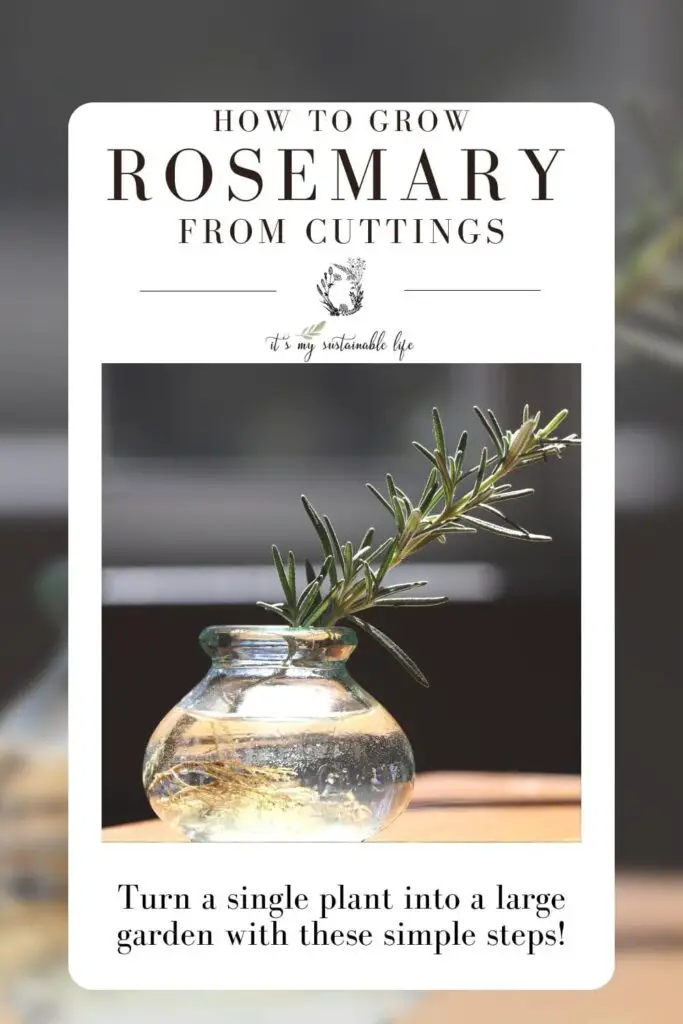
Rosemary plants in those zones can grow to an average height of 4 feet with a width of 4 feet! A shrub indeed!
In my colder climate, those residing in zones 6 and colder need to make contingency plans and bring those plants in during the colder months if they expect to grow the same plant year-to-year. Or take rosemary cuttings to propagate new rosemary plants!
CAN ROSEMARY BE GROWN FROM CUTTINGS?
Absolutely, yes! Growing rosemary from cuttings, aka propagating rosemary, is simply the process by which you produce an identical plant to that of its parent by either dividing the plant, taking cuttings, or layering.
It’s in essence the process of cloning a plant to capture the genetic makeup of the plant. It’s faster than growing from seed, and certain plants like rosemary take very well to the process.
BENEFITS OF GROWING ROSEMARY FROM CUTTINGS
If the rosemary in your garden or pot is thriving, you know it’s happy. You already know the cultivar can grow without disease, pest issues, and is content with the sun & watering.
The existing plant has been acclimated to your climate and growing conditions. So why not take from this plant that is thriving and duplicate it? The beauty of propagating rosemary from cuttings is you can do just that. Capture all the qualities & flavor of the rosemary plant you love and recreate it!
AND for FREE! Who doesn’t love free? Instead of purchasing new rosemary plants each year, growing rosemary from cuttings is an easy way to grow new rosemary plants to your hearts galore!
If you’ve never grown rosemary from seed, than let me tell you it’s a lesson in patience. Rosemary is a SLOW grower, at least in the first year’s growth, and can be picky when trying to get it to germinate. I know, I’ve tried, and I’ve given up 😅
By growing new rosemary plants from cuttings each year, I no longer have to wait the waiting game and wonder if it’s ever going to germinate and grow! Within just a few weeks time, I can already see new growth & roots being formed, and in no time flat will be able to harvest from the new plant! Win! Win!
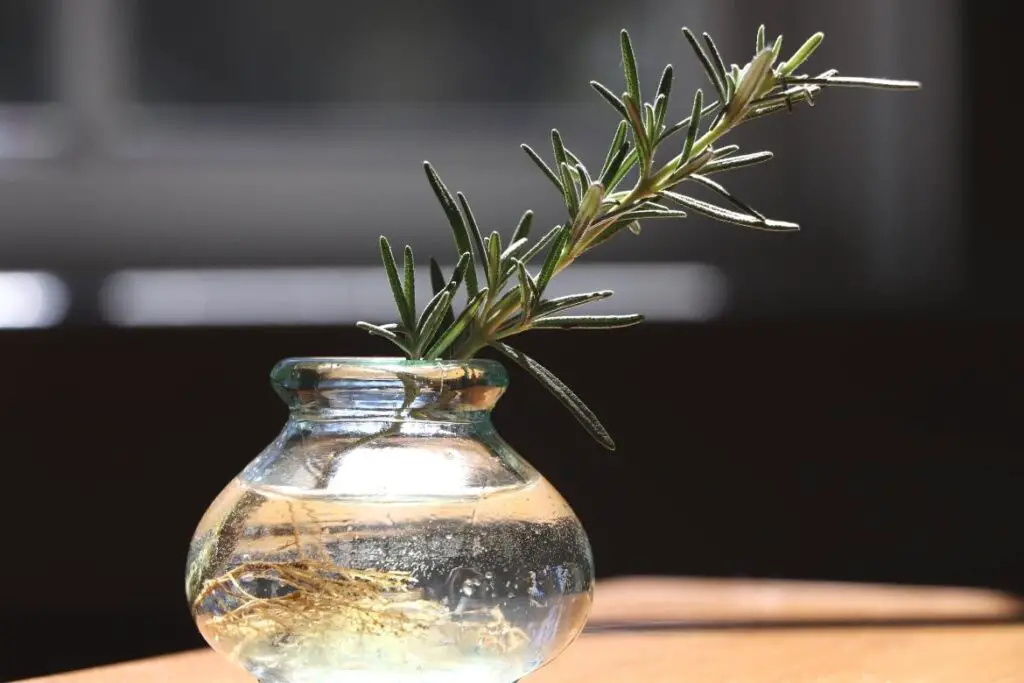
WILL ROSEMARY ROOT IN WATER?
Yes! Propagating the rosemary cuttings in water is my preferred method for rooting rosemary cuttings!
Although not the only way to encourage root growth (more options are listed below), propagating rosemary in water is by far the simplest method.
ROOTING ROSEMARY OPTIONAL METHODS
Should you choose, you can also propagate rosemary cuttings using rooting hormones or simply in soil.
That being said, even though I can make my own organic root stimulator, why take the added step when it’s not necessary and I can achieve the same results without it?
Be aware that purchased rooting hormones, no matter the form (powder/gel) require that you wait a full year before consuming ANY part of the plant. Not sure about you, but that rings a few warning bells 😳
Should you still wish to use growth hormones or rooting hormones, I highly recommend using the recipe for making your own via organically, which still encourages healthy root growth, just without the hormones.
HOW LONG DOES ROSEMARY TAKE TO GROW FROM CUTTINGS?
Remember, rosemary is a slow grower, especially during its first year’s growth period.
That being said, you should see signs of root growth from the rosemary cuttings within a few weeks time.
Once the cuttings have been transplanted, you can usually see new growth on the plant within 6 to 8 weeks time.
HOW TO GROW ROSEMARY FROM CUTTINGS
So how exactly do you grow rosemary from cuttings? Follow the guide below and you will have new plants in no time flat!
TIP – Although you can take a rosemary cutting anytime throughout the year, I recommend taking your cuttings either during the height of its growing season, typically during the warmer months of the year, or once the plant has finished flowering, typically as the weather cools during the fall.
STEP 1
Gather the few items you will need …
- Glass jar or Vase
- Sharp pruning shears or scissors (clean your tool with rubbing alcohol to sterilize)
- Healthy Rosemary “Mother” plant
- Clean water (for propagating in water)
- Growing medium or potting soil (propagating in soil)
- Optional Rooting Hormone or Stimulator
- Optional plastic bag
STEP 2
Source a rosemary plant if you don’t already have one available.
STEP 3
Sterilize your cutting tool with rubbing alcohol.
STEP 4
Take the rosemary cuttings. From the mature rosemary plant, select stems that have new growth. You can tell this growth by color, it will be lighter green in color, and by feel, the new growth will have tender stems that are flexible.
Avoid any semi-wood or hardwood area’s on the stem. The image below taken from “Propagating Herbs From Cuttings” shows the area’s of the stem of lavender (the growth is pretty much the same as rosemary) and its growth patterns. The cuttings should be taken from the softwood, or new growth area of the stem.
Using the sterilized cutting tool, cut a length of about 4-6 inches of new growth (softwood), typically found near the tip of the rosemary stem, just below a leaf node.
When taking any cuttings, plan for failure. Yup, you heard correctly. Always take more than you think you will need in case a few don’t want to cooperate in growing roots.
STEP 5
Remove the bottom 2 inches of leaves without damaging the stem itself, leaving the stem bare. This is where the roots will begin to develop. Make sure you have at least 6 to ten leaves left on the tip of the stem.
Don’t throw those removed leaves away! Either use them fresh or lay them out on a plate and let them dry for use later.
The rosemary cuttings are now ready to propagate. Here you have several options of the propagation method you want to utilize.
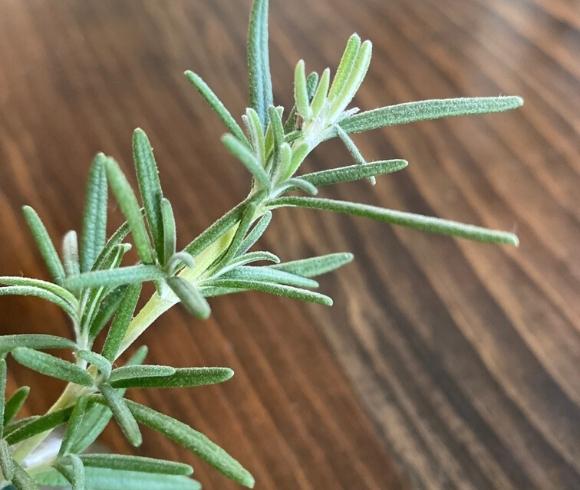
HOW TO PROPAGATE ROSEMARY IN WATER
Once you have the rosemary cuttings prepared, make a fresh cut at a 45° angle at the bottom of the stem allowing for fresh access to the stem’s center.
Place the freshly trimmed stems into a jar of water, making sure that no remaining leaves are touching the water or are submerged in any way.
Plan on draining the water, rinsing the vessel out, and replacing it with fresh water every couple of days. This precaution prevents any bacteria growth or algae from forming.
Within a week to two weeks, you should begin to see root development along the stem that is submerged in water. The amount of time this takes is largely dependent on the ambient temperature your cutting resides in.
By week 6 or so, you will be able to tell if the cutting is still viable or not. Stems that are dying will turn in color, the needles turning brown, and begin to wither up and drop.
Once the stem has developed a good root system, begin to harden & strengthen the roots by gently dropping sterilized pebbles on top of the roots while they are still in the water, a few at a time each day for a week. The rooted stem is then ready to be transplanted into soil and its own pot.

HOW TO PROPAGATE ROSEMARY IN SOIL
There are some who claim plant cuttings actually develop a stronger, more healthy root system when they are propagated in soil instead of water.
As I am always in a rush when I take my cuttings either in the spring when my rosemary is showing new growth, or in the fall before I move my rosemary indoors, I typically take the quickest route and propagate them in water and plant them later in the season once the roots have developed.
To propagate your rosemary cuttings in soil is a simple matter however.
Using a soil-less rooting medium consisting of potting soil, perlite, vermiculite, sand, sphagnum moss and the like, fill a pot of choice, making sure there is appropriate drainage in the pot itself. Alternatively, you can make your own soil mix by combining one part sand or perlite to two parts compost.
Taking the eraser end of a pencil or using a dibble, create a hole in the potting mix.
Optional is dipping the rosemary stem into either a growth hormone or root stimulator prior to planting in the hole you’ve created.
NOTE: Again, commercially purchased growth hormones are typically lab created and generally require you wait at least a full year before using any part of the rosemary plants in any way. As I’ve stated before…
“They are made using chemical formulations that this organic garden does not want to have introduced into it.”
IMSL
Place the rooted stem into the hole, gently firming the soil around the base of the stem to ensure there is good contact around the root and stem.
If you are planting multiple stems in one pot, plant the stems near the edge of the pot, giving them plenty of room to grow. Plan on separating the plants and transplanting them into their own pot once roots have developed. You can give a gentle pull, the stems should resist when root growth has occurred.
Cover the pot with a plastic bag which will mimic the conditions inside a green house. Place the pot where it will receive the needed 6-8 hours of sunlight each day, keeping the soil moist but not soggy. Within 6 to 8 weeks you should note new growth.
HOW TO TRANSPLANT PROPAGATE ROSEMARY BY LAYERING
Should you be fortunate enough to be able to grow your rosemary out of doors throughout the year, another way to create multiple plants is by a method called “layering”.
Layering is a method of propagation of the “mother” plant without actually taking cuttings off the plant. There are several methods of layering; simple layering, tip layering, serpentine or compound layering, mounding or stooling layering and french layering.
In a nutshell, the simple way of layering is as follows:
- Choose a long stem which is somewhat pliable and can be bent to the ground level, preferably from a 1 to 2 year old one
- Bend the stem to ground level and “pin” it using a u-shaped garden staple or make one using a coat hanger
- Be sure to leave at least 2 to 4 inches of rosemary stem on the opposite side of the pin (away from the plant)
- Optionally, you can dig a shallow trench which you will pin the stem into
The baby plants that you’ve created through the layering process will be ready to sever from the mother plant after several months to a full year.
When ready to separate them, preferably do so in the fall or cooler months, you have the option to transplant them into individual pots or directly into the garden in the spring once the soil has warmed sufficiently.
ROSEMARY PLANT CARE TIPS
Rosemary is pretty easy to grow when placed in the right conditions. Hopefully these tips will help you keep your rosemary thriving.
How To Care For Rosemary Plants
One you’ve transplanted the rooted stems and have new rosemary plants, care for them as you would any other plant you have growing. Always making sure at a minimum its basic needs are met by providing the appropriate sunlight and water.
Remember, rosemary is a Mediterranean plant and will thank you for as much direct sun you can provide, especially when being grown indoors in a pot or container.
How To Transplant Rosemary Indoors For Winter
When growing rosemary outdoors, either in the garden bed or in pots or containers, many will need to plan on bringing those plants indoors once the cold months arrive.
With the right guidelines and a few tips, your rosemary can be moved indoors and continuing growing along its merry way 😊
Although tempting, DON’T transplant the entire rosemary plant if the plant is too old and looking woody instead of displaying lots of green leaves. Should that be the case, instead, follow the instructions for growing rosemary from cuttings. You can either use the water method or the soil method.
If the plant is healthy, pest free (make sure to look it all over), dig it up and transplant into a pot with good drainage.
Acclimate the potted rosemary plant to the indoors over a weeks time by bringing the pot indoors at night and back out to its normal environment outdoors during the day. Make sure the potted plant is indoors full-time once the outdoor temps no longer reach 55°F.
It’s always a good idea when bringing plants indoors to over-winter them to quarantine them for a bit, especially when you have indoor houseplants. Ultimately, placing the plants in as bright a south-facing window as you can provide.
Rosemary Container Care
Proper watering is key to keeping your rosemary plant happily growing. You will know when it requires water when you insert your finger into the soil and the top 1 to 2 inches feels dry. Water deeply at this point, allowing the pot to drain and never stand in water.
TIP: Place the pot in a tray containing pebbles or gravel. This will not only provide drainage but also provide much needed humidity (more on that below) for the plant.
Fertilize sparingly, only about once every couple of months, and I recommend using a liquid kelp fertilizer which has been diluted in water.
Follow Us!
Indoor Winter Care For Rosemary Plants
Rosemary likes humidity. Maintain humidity by making sure the tray with an added layer of pebbles or gravel which the pot will rest on always has water in it.
Should the rosemary not receive enough humidity, covering the plant and the tray to create a greenhouse effect is always a consideration using a cloche or plastic bag, or consider running a humidifier.
As winter light fades, the rosemary plant may struggle. Should this happen, plan on supplementing the light using grow lights or fluorescent lights.
Rosemary enjoy cooler temps indoors, so no placing them near heat sources during the winter months! Maintaining 60° F to 68° F will keep them happy.
Be sure to check your rosemary plants for hitchhikers which may have come in from outdoors. Red spider mites, aphids, whiteflies, and spittlebugs all enjoy a bit of rosemary by sucking on the plants causing the leaves to whither and dry. Should you note any of these hitchhikers, plan on using an organic insecticidal soap treatment.
When the rosemary plant has received too much water and not enough proper air circulation, the risk of disease develops such as molding, root rot, and powdery mildew. Following proper watering as stated above and running a fan to improve air circulation will greatly reduce any risk.
There you have it! All you need to grow rosemary from cuttings using any of the options which strike your fancy!
Will you be growing rosemary from cuttings?
Love, Light, & Laughter ~

Shop This Post
Enjoy this article? Please consider sharing it on your favorite social media channel! Want more? Subscribe below for the occasional update with all the “happenings on the hill”!
Have You Seen The Latest?
- How To Sanitize Seed Trays
- How Often To Water Tomato Plants
- Winter Sowing In Milk Jugs
- How To Appliqué
- What Food Group Are Eggs In

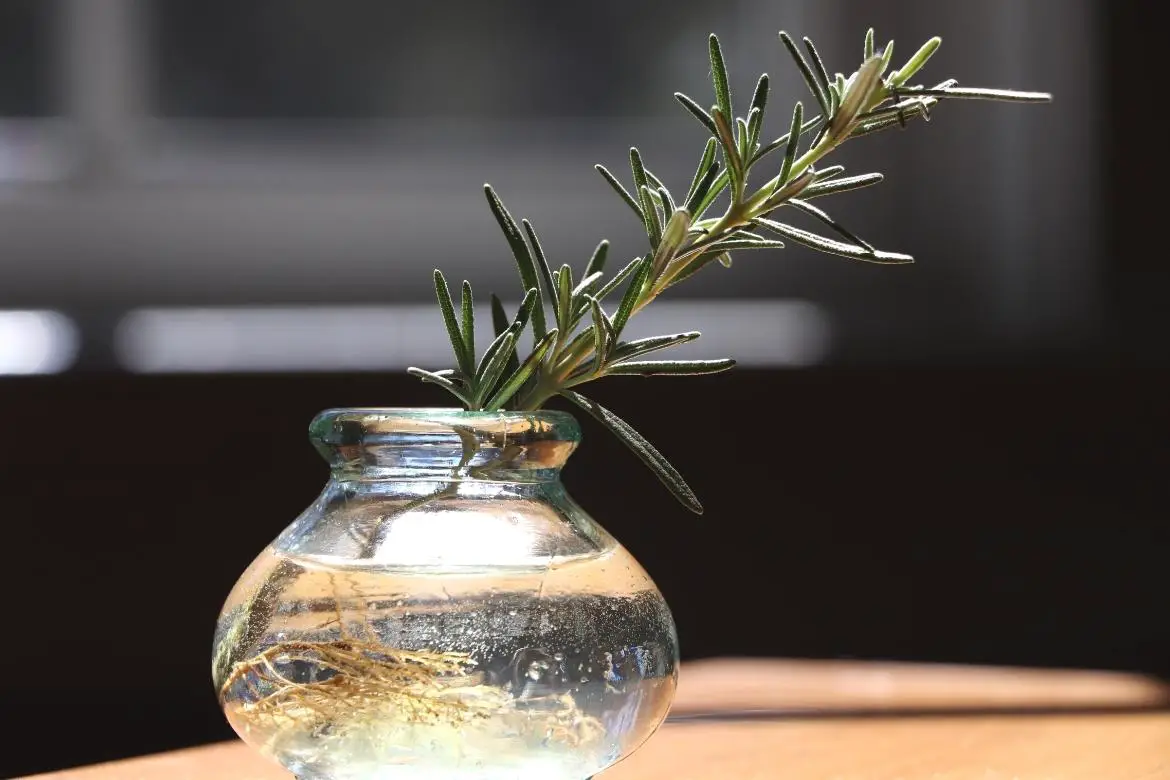

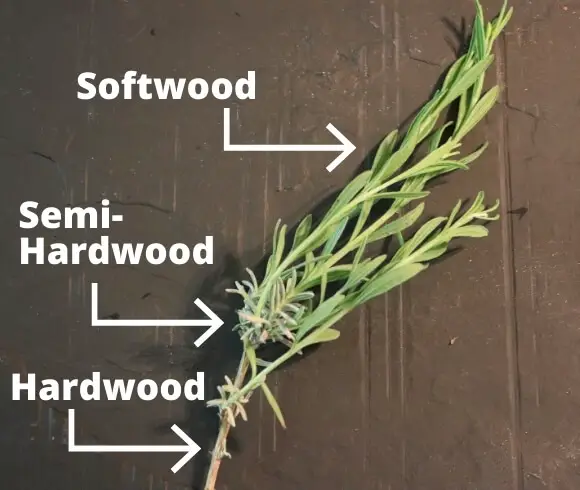
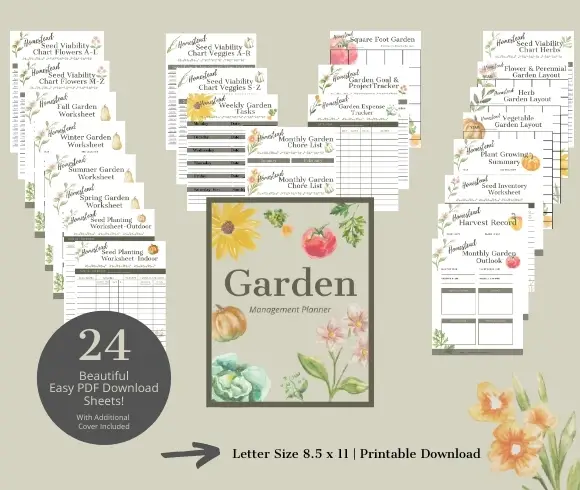
8 comments
I just brought my rosemary plant indoors and also have some rooting by my kitchen sink. The plant is potted with my parsley and thyme, so that I have fresh herbs this winter! I also plan on using rosemary twigs for my christmas tablesetting!
Love this!
I didn’t know that this was possible!
Pinning! I love this! I will be getting a cutting soon and growing rosemary!
I have been growing Rosemary, Stevia, Oregano, French Lavender, Thyme, Basil, Fennel and a few others for almost 50 years. Due to health reasons, we have had to move a few times, thus leaving my herbs in the yard for the next person 🙁. I have started this cycle over and over again, and now that I am finally settled (hopefully!) my Rosemary is about three feet tall.
Everything that I have grown has been as organically grown as possible. I visited the Rodale farm quite a few times in my early attempts to grow vegetables and herbs and also bought their books.
Thank you, Suzan, for the opportunity to read all your helpful and “enticing” projects.
Hi Marlene~
It is sad when you have to “start over” with gardens. You can never go wrong with Rodale 😊
I want to try this! Rosemary is sooo delicious and gives such good flavor.
Hi Suzan. Thanks for all of these tips for rosemary – it’s a favorite, and I love having it in the window near my kitchen sink. Appreciate the tip about placing the pot in some pebbles – definitely will try this! Found you at TFT where I’m also sharing small office ideas today at #85 – hope you’ll visit soon. Peace to you right where you are.